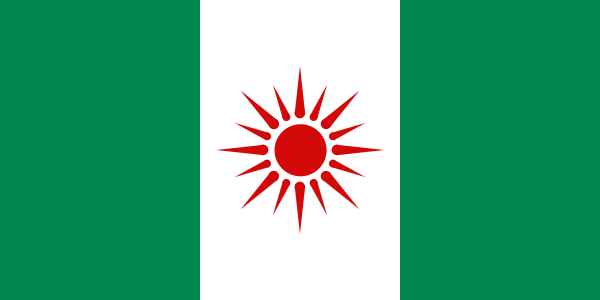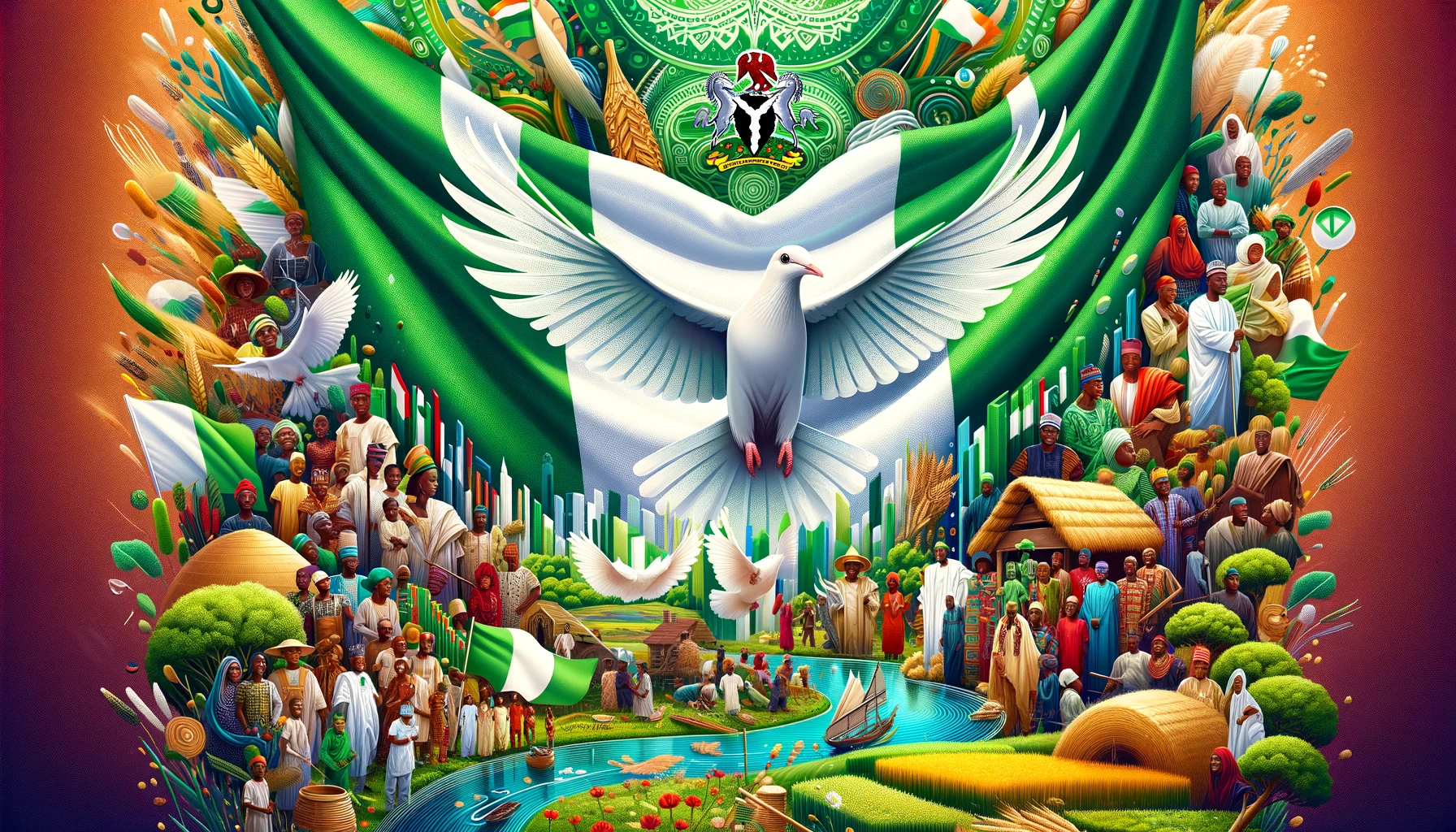The Nigerian flag, adopted on October 1, 1960, upon Nigeria’s independence from British colonial rule, stands as a powerful symbol of national pride, unity, and the country’s rich natural resources. Designed by Michael Taiwo Akinkunmi, a then-student, the flag features a simple yet profound design of three equal vertical stripes – green, white, and green. This design not only represents the lush agricultural landscape and the peace and unity of Nigeria but also encapsulates the spirit and resilience of its people.
Table of Contents
Introduction
The flag of Nigeria, officially adopted on the 1st of October, 1960, in conjunction with the nation’s liberation from British colonial dominion, serves as a potent emblem of national dignity, cohesion, and the abundant natural wealth of the country. The creation of Michael Taiwo Akinkunmi, who was a student at the time, the flag’s design is elegantly straightforward, consisting of three vertical stripes of equal width – two green flanking one white. These colours are symbolic, with the green reflecting Nigeria’s verdant agricultural regions, and the white denoting the nation’s aspirations for peace and solidarity, altogether embodying the endurance and spirit of the Nigerian populace.
The Design and Symbolism
The green bands on the flag represent the agricultural prosperity and natural endowments of Nigeria, which are pivotal to the country’s economic framework. The intervening white band stands for peace and unity, mirroring Nigeria’s dedication to fostering concord across its varied ethnic and religious groups. The selection of these colours highlights the critical role of sustainability, peace, and cohesion in defining Nigeria’s national ethos and developmental aspirations.

The Historical Journey
The inception of the flag marked a pivotal moment in Nigeria’s journey towards sovereignty. Selected from close to 3,000 submissions during a nationwide contest, the design by Akinkunmi underwent a modification to achieve its present appearance by omitting the initial red sun emblem, in a bid to preserve its simplicity and ensure it embraced all inclusively. When it was hoisted on the day of independence, the flag signified the dawn of a new epoch for Nigeria, symbolising a united nation, impartial to any ethnic or religious faction.

The Flag in Nigerian Culture
The flag of Nigeria is profoundly embedded within the nation’s cultural fabric, acting as an emblem of national pride and patriotic sentiment. It is prominently displayed on national holidays, during pivotal ceremonies, and within educational institutions throughout the country, instilling in young Nigerians the principles of solidarity, tranquillity, and reverence for their homeland. Furthermore, the flag serves as a muse for artistic expressions, literature, and musical compositions, underscoring its vital contribution to articulating the country’s collective identity and cohesion.
The Flag on the Global Stage
In the global arena, the flag of Nigeria stands as a testament to the nation’s autonomy, heterogeneity, and aspirations. It embodies Nigeria’s endeavours in peacekeeping efforts, diplomatic relations, and its influence on worldwide cultural dynamics. Moreover, the flag engenders a feeling of community among Nigerians living abroad, rallying them together under a shared symbol of national esteem and legacy.
The flag of Nigeria serves as a powerful affirmation of the nation’s fortitude, plurality, and dedication to harmony and concord. This emblem surpasses mere chromatic representation, encapsulating the aspirations, spirit, and ambitions of the Nigerian populace. In commemorating the flag, we reflect on our common principles and the united path we tread towards achieving a thriving and cohesive Nigeria.







